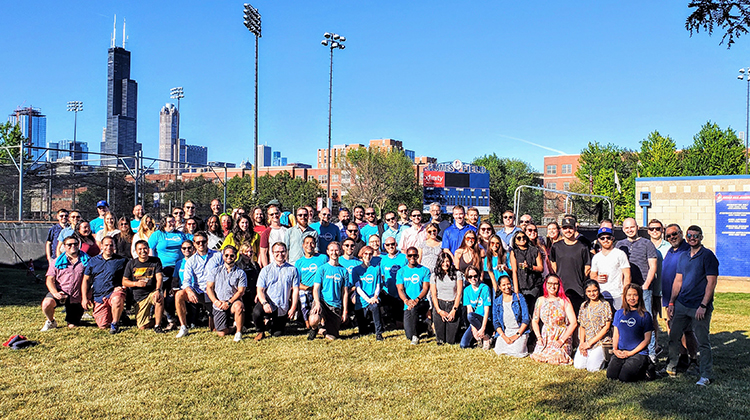Courtney Shipshock
February 5, 2021

In 2019, it was reported that about 41 percent of workers between the ages of 20 and 54 have a child at home. Now, as the COVID-19 pandemic continues, that number becomes even more important. It also reflects the number of workers who are juggling work, child care, remote learning, and more. Whether they’re remote, contracted, or essential employees, offering support to the working parents in your organization is incredibly important. The degrees of support you can offer working parents will vary from company to company. It depends on several different factors, including how many parents you employ, what your budget is, and more. However, there are still several options you can provide working parents that fit your budget—keep reading to learn more!
Assess Gaps in Support
To figure out where your organization can start offering better support to working parents, you need to first understand what kind of support you are—and aren’t—offering now. Look for gaps in your company culture, ongoing business processes, and benefits that make it more difficult for working parents to find success in their roles. Additionally, it’s important to understand what type of support your employees are actually looking for. From there, you can more accurately address the needs of your working parent employees.
Offer Flexibility
As a human resources professional, you know the difficulty of searching for, securing, and managing benefits that meet your diverse workforce’s needs. But that shouldn’t get in the way of offering support to the working parents at your organization. Start at the beginning by offering significant flexibility in the aspects of employees’ day-to-day routines.
Work closely with working parents to come up with a schedule that works for them. In addition, try to place less emphasis on the regular “9-5” working day. If your organization relies on strict hours or scheduled time tables, give employees the opportunity to edit their scheduling preferences based on their child-care needs. Above all, remember that an attitude of compassion and empathy is absolutely vital—working parents are juggling two full-time jobs as they care for their children and fulfill their professional obligations. They’ll appreciate your efforts to meet them where they are by providing flexible support.
Promote Vacation Usage
The pandemic seriously impacted the way employees took their vacation days in 2020. In fact, according to a recent survey, 92 percent of Americans said they canceled, postponed, or didn’t book a vacation due to the pandemic. As a result, many employees’ vacation days were left unused. We know that historically, taking breaks from work, whether it was for a mental health day, a vacation, or a stay-cation, was momentously helpful for an employees’ work-life balance and wellness.
While travel isn’t as much of an option these days, it’s still important to encourage and promote the usage of vacation time in your organization. Why? We know it provides a much-needed break. But in addition, it can give working parents the opportunity to spend time with their families and mentally recharge with some of their favorite self-care activities. How can you do this? Send out regular reminders for employees about how many vacation days they have remaining. Teach managers how to notice the signs of an employee, especially a working parent, who looks and feels stressed or burnt out. Take the lead yourself by using your own vacation time. Then, share with coworkers how you were able to relax and recharge during your break!
Encourage Family-Friendly Culture Events and Support Systems
For many working parents, it can feel uncomfortable to bring up their children during working hours. Combat this discomfort by creating an environment that allows working parents to feel comfortable and even encouraged to share about their life outside of work. Is your organization one that often holds company events (including remote ones, given the pandemic)? Brainstorm options that are family-friendly and fun for all ages to participate in. Take PerkSpot, for example. Our holiday celebrations included a magician who performed over Zoom, and parents were encouraged to invite their children to join. If your company relies on virtual communication tools, consider creating a channel or forum where working parents can discuss ideas for remote learning, funny stories, and ways to keep children engaged during working hours.
Offer Financial Aid on Child Care and Children’s Products
Even before the pandemic, a significant portion of working parents’ income went to child-care costs. In fact, the average American couple spends 25.6 percent of their net income on child care alone. These days, financial stress is at an all-time high. It’s important to consider what your organization can do via additional benefits that would provide support for working parents. Discover the cost-free PerkSpot solution—offer your employees exclusive discounts on more than 30,000 products and services. This includes child care from the nation’s top providers, children’s toys, food, clothes, and other important baby gear.
Both working parents and your organization as a whole will benefit from providing the type of aid we’ve listed above. Offering child-care support alone can decrease job turnover by more than 60 percent! Plus, it can inspire improved job satisfaction and loyalty, not to mention a more productive workforce. Give the working parents at your organization the help they need, both during the COVID-19 pandemic and beyond. If you’re interested in offering exclusive discounts to working parents and your entire workforce, get in touch!
















